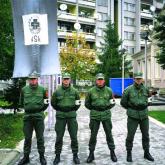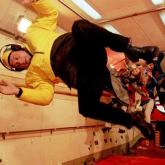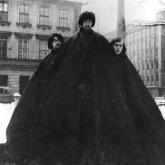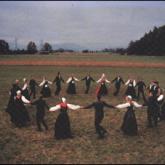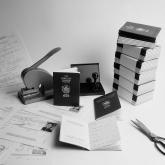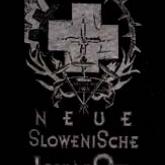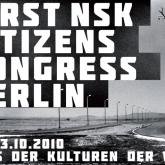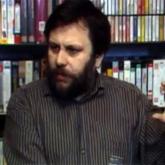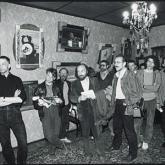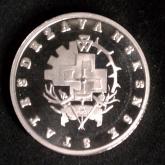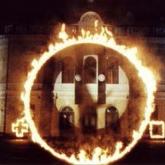Week 51: IRWIN
Hi Everyone,
This Tuesday is another event in a year-long series of weekly conversations and exhibits in 2010 shedding light on examples of Plausible Artworlds.
This week we’ll be talking with Miran Mohar, founding member (with fellow artists Dušan Mandič, Andrej Savski, Roman Uranjek, and Borut Vogelnik, who may also skype in) of IRWIN, a collective of Slovenian artists, primarily painters, which would become the visual-arts wing of the broader collective Neue Slowenische Kunst (NSK).
http://www.nskstate.com/
http://en.wikipedia.org/wiki/IRWIN
http://times.nskstate.com/tag/irwin/
IRWIN was founded in 1983 by a group of guys from the punk and graffiti scene in Ljubljana, who decided to call themselves Rrose Irwin Sélavy. The name of course is a wink to Marcel Duchamp, who used “Rrose Sélavy” (pronounced, tautologically, as éros c’est la vie) as one of his feminine pseudonyms. The group subsequently shortened the name to R Irwin S. In 1984, the group co-founded a larger collective known as Neue Slowenische Kunst (NSK), with like-minded artists from other fields, including the rock band Laibach, and the Scipion Nasice Sisters Theater group. NSK’s modus operandi was what their contemporary and compatriot Slavoj Zizek has called “over-identification”: that is, rather than critiquing powerfully connoted political imagery (including Soviet, fascist, religious and Suprematist images), they would endorse it to an excess, to considerable traumatic and provocative effect, engendering confusion that could only be resolved by acknowledging that no space, no frame — no world of interpretation — is neutral. In some ways, it was a particular, post-Yugoslavian brand of institutional critique; but the insistence on collective, depersonalized production, pushed IRWIN and NSK as a whole in the direction of imagining alternative forms of political communities, including the project “A State in Time”, which led to opening embassies and consulates in Moscow, Ghent and Florence, issuing NSK passports to “citizens” who have used them to cross borders.
More recently, IRWIN has developed the large-scale, open-ended cartographic project “East Art Map” (presented at Basekamp in 2006), one of the most ambitious attempts to map the vectors of influence and development of conceptual art in the countries of the former Soviet bloc — reappropriating a history and horizon of aspirations and production, challenging the hegemony of the Western art-historical canon. With humor and meticulous detail — not to mention some beautiful maps — IRWIN has shown the importance for any plausible world to be able to map its trajectory. The group refers to this approach with the paradoxical term “Retro-avant-gardism”, drawing attention to the temporal provincialism inherent in conventional art history with the 1987 statement: “The Future is the seed of the past.” With one week left to go in our year-long cycle of discussions, and before Plausible Artworlds morphs into a new project, what could be more important to address than that performative paradox?

